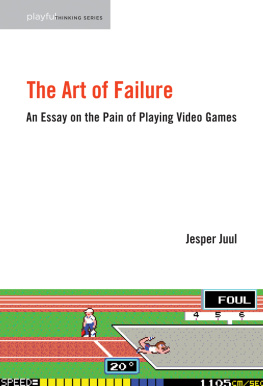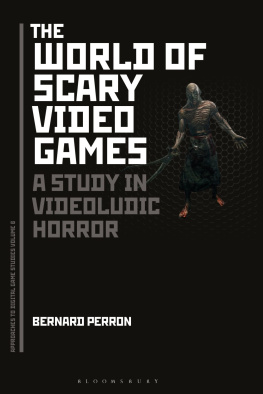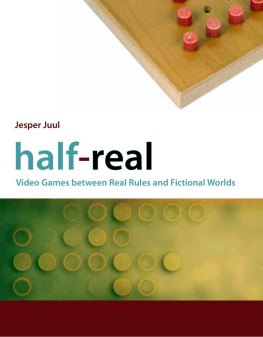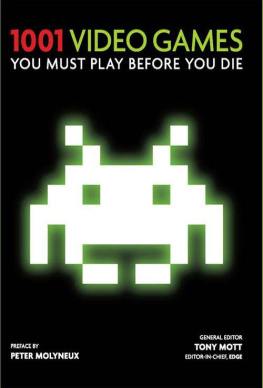
Handmade Pixels
Handmade Pixels
Independent Video Games and the Quest for Authenticity
Jesper Juul
The MIT Press
Cambridge, Massachusetts
London, England
2019 The Massachusetts Institute of Technology
All rights reserved. No part of this book may be reproduced in any form by any electronic or mechanical means (including photocopying, recording, or information storage and retrieval) without permission in writing from the publisher.
This book was set in ITC Stone Serif Std and PF DIN Text by Toppan Best-set Premedia Limited. Printed and bound in the United States of America.
Library of Congress Cataloging-in-Publication Data
Names: Juul, Jesper, 1970- author.
Title: Handmade pixels : independent video games and the quest for authenticity / Jesper Juul.
Description: Cambridge, MA : MIT Press, [2019] | Includes bibliographical references and index.
Identifiers: LCCN 2018056263 | ISBN 9780262042796 (hardcover : alk. paper)
Subjects: LCSH: Video games--History. | Video games--Design. | Video games industry.
Classification: LCC GV1469.3 .J89 2019 | DDC 794.8--dc23 LC record available at https://lccn.loc.gov/2018056263
10 9 8 7 6 5 4 3 2 1
For Alva, whose independence supersedes all others.
d_r0
Contents
Preface
Its as if someone pressed the RESET button: though much of my life concerns playing and writing about video games, independent games give me the refreshing feeling of starting over, of once again not knowing what video games are and having to discover them from the beginning. Its about going backnot nostalgically back to early games, but rediscovering the feeling I had when I first started playing: the feeling of unexplored territory, in the world and in myself, the anticipation that every new video game can offer something unsuspected or can be an argument about what video games should be.
Theres a thrill when something breaks and new things begin to grow through the cracks: I came to independent video games because I was tired of video games about running through hallways shooting things, because I was fascinated with the underdog, entranced by radical new ideas of what games could be, enmeshed in lively gatherings and late-night discussions about a new video game, grown bottom-up outside the shackles of big corporations and expressing new ideas and personal experiencesall while I also was programming at game jams and trying to teach students how to create such games.
During the twenty years that this book covers, one of my many relations to video games has been that of the addict to experiments: always looking for the next game to pull the rug out from under me and make me do, see, or think something never considered, always upping the dose.
Yet as I played and talked about these games, I started seeing other things in independent games: there was a longing for an imagined idyllic past in video game history, alongside a democratic game movement working toward letting video games represent a more diverse group of developers and players, creating a new class of culturally interesting games with the courage to break with game tradition. But such independent games sometimes ticked a different set of boxes, the boxes of intellectual cultural criticism and all its associations, including that of only being made for a small portion of the population.
My ambivalence was doubled because I intuitively subscribe to several sets of competing standards: I am an inclusive user of games, interested in how others and myself find new and quotidian pleasures in seemingly simple casual games. I do enjoy many big-budget games on consoles. And I value the prolonged discussion of avant-garde video game experiments, challenging our preconceptions of what a video game can be.
This book is thus about strange new games and the conflicts around them.
For this book, Ive interviewed twenty-one developers and festival organizers. Interview excerpts can be found throughout the book, and the full interviews are available on the books website at www.jesperjuul.net/handmadepixels.
Although this book lists my name as author, it did take a village to write, and Im grateful to all who helped me through their support, discussion, or suggestions.
First, thanks to Dooley Murphy, indefatigable research assistant.
Thanks to Doug Sery, my editor at MIT Press, and the rest of the MIT Press for faith in the project.
Thanks to my colleagues at the Royal Danish Academy of Fine Arts, School of Design for support and discussion: Ida Engholm, Jakob Ion Wille, Arthur Steijn, Li Jnsson, Sofie Beier, and Tine Kjlsen.
For discussions and comments on the book and its ideas through its incarnations, thanks to Clara Fernndez-Vara, Andy Nealen, Bennett Foddy, John Sharp, Frank Lantz, Nick Montfort, Charles Pratt, Eric Zimmerman, J. P. Dyson, Celia Pearce, Sebastian Deterding, Solip Park, Cameron Kunzelman, Naomi Clark, Chris Bateman, Pawe Grabarczyk, Jos Zagal, Sonia Fizek, Fabrizio Poltronieri, Pia Pedersen, Nanna Debois Buhl, liver Prez Latorre, Susana Pajares Tosca, Brian Schrank, Liz Linden, Nick Montfort, Jonathan Lessard, and Joost van Dreunen.
Special thanks to my family, Nanna, Alva, and Otto, for unwavering support.
Parts of the Undertale section in chapter 4 were originally drafted by Dooley Murphy.
An early version of chapter 2 was published as High-Tech Low-Tech Authenticity: The Creation of Independent Style at the Independent Games Festival in Proceedings of the 9th International Conference on the Foundations of Digital Games, Ft. Lauderdale, Florida, 2014.
An early version of chapter 4 was presented as Anti-inspiration in Independent Games at the 1st International Joint Conference of DiGRA and FDG 2016, Dundee, Scotland, 2016.
Early versions of chapter 5 were presented at DiGRA UK, Manchester, 2016, and at the Philosophy of Computer Games Conference, Copenhagen, Denmark, 2018. Early versions of chapter 6 were presented at Spilbar in Copenhagen, 2016, and at Game Think 2.0 in Glasgow, 2017.
Cover image courtesy of Pippin Barr.
1 Introduction
Strange Games
Figures 1.11.4: In one video game, an old lady staggers through the graveyard. In another, a cat witnesses the 1953 coup in Iran. In one, you play the drab role of an immigration officer in a fictional Eastern European country. In another, you solve puzzles in a pixelated world of wonder. In another game, the character goes through hormone replacement therapy. Two rabbit-like creatures quip existentially about burning up in lava. Stanley works in an office, doing only what he is told, the narrator saysbut what if you do something different? A lonely man wanders around a national park, seeing the sun rise and set. In what looks like an adventure game, you must wait hours in real time to partake in the art exhibition at the Museum of Modern Art.
These are independent and experimental games. I have written this book because I think the appearance of independent video games is one of the most interesting and important events in the history of video games, and I am deeply addicted to the rush of finding a new game that flies in the face of everything I thought I knew about video games. Do I have a favorite among these games? I wish I could answer, but its not that any one game is the one that really represents me; rather, every game asks us to be in the world in its own way, to see the world from a new perspective, to do new things.
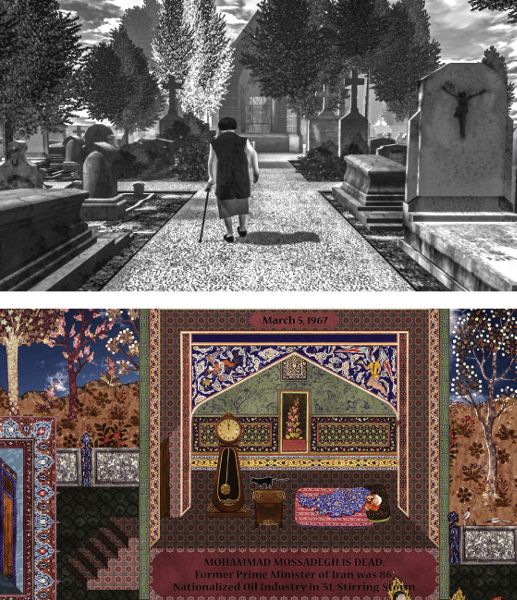
Next page


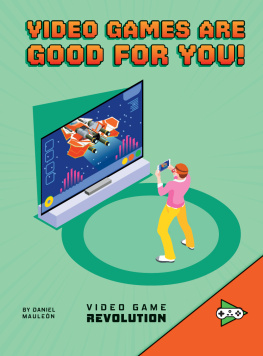

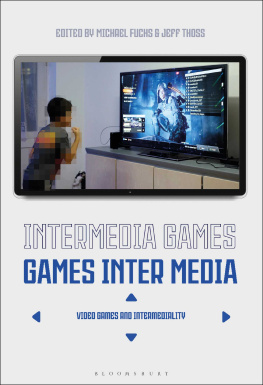
![Mark J. P. Wolf (editor) - Encyclopedia of Video Games: The Culture, Technology, and Art of Gaming [3 volumes]](/uploads/posts/book/279290/thumbs/mark-j-p-wolf-editor-encyclopedia-of-video.jpg)
